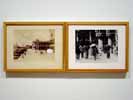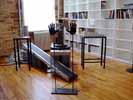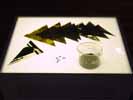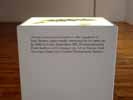Artists • Damage Done
Patrick Altman
Approximately twenty years after Thomas Barrow’s Cancellations series, Québec artist Patrick Altman evokes Barrow’s signature “X” in his work Venise revisitée No. 1 (1993), part of a larger series using nineteenth-century travel photographs from Italy. Where Barrow seamlessly embedded his “X” into the image by inscribing his negatives, Altman attacks the surface of the photograph itself. However, Altman’s strategy engages another set of issues revolving around photographic documentation and the representation of the past. As the chief photographer of the Musée du Québec who has been responsible for documenting countless artworks in the museum’s collection, Altman understands the difference between representation and referent. Given his background and the fact that he is himself a collector of nineteenth-century photography, it is all the more shocking when one realizes that he has actually damaged irreplaceable nineteenth-century stereo cards and albumen prints. But, in a kind of parody of his day job, he documents the exact areas of the photographs he intends to damage before he obliterates them. He then displays the damaged print next to his documentation of what is now absent from the print; most poignantly, people whose likenesses had, until Altman’s intervention, remained intact for at least one hundred years. Unlike the Cancellations series, in which Barrow produced his negatives to be damaged, Altman has chosen to work with photographs whose negatives were lost long ago. Altman simultaneously destroys and conserves history.
Altman’s work raises the question of what might be at stake in terms of the fragility of the photographic trace. He forces the issue by confronting us with a loss that is not symbolic or staged but actual. He creates the conditions for each of us to consider what this loss might mean historically, while, at the same time, offering us the solace of the “document.” The truth, Altman demonstrates, is that every movement from one medium to another, whether analogue to analogue, analogue to digital, or digital to digital, is invariably a subjective editing process that raises questions of what is to be saved and what must be left behind. Things tend to disappear at every turn.
Max Dean
Like Patrick Altman, Toronto artist Max Dean, through his robotics installation, As Yet Untitled (1992-95), has created a work that contemplates the tenuous life of photographs as material objects and as one-time carriers of often deeply personal memories. His installation touches on some of the same mixed emotions – curiosity, regret and resignation – that present themselves when we sift through a box of discarded photographs and eventually walk away, leaving them to almost certain oblivion. Dean intensifies these emotions by further implicating us in the inevitable process of destruction and loss.







